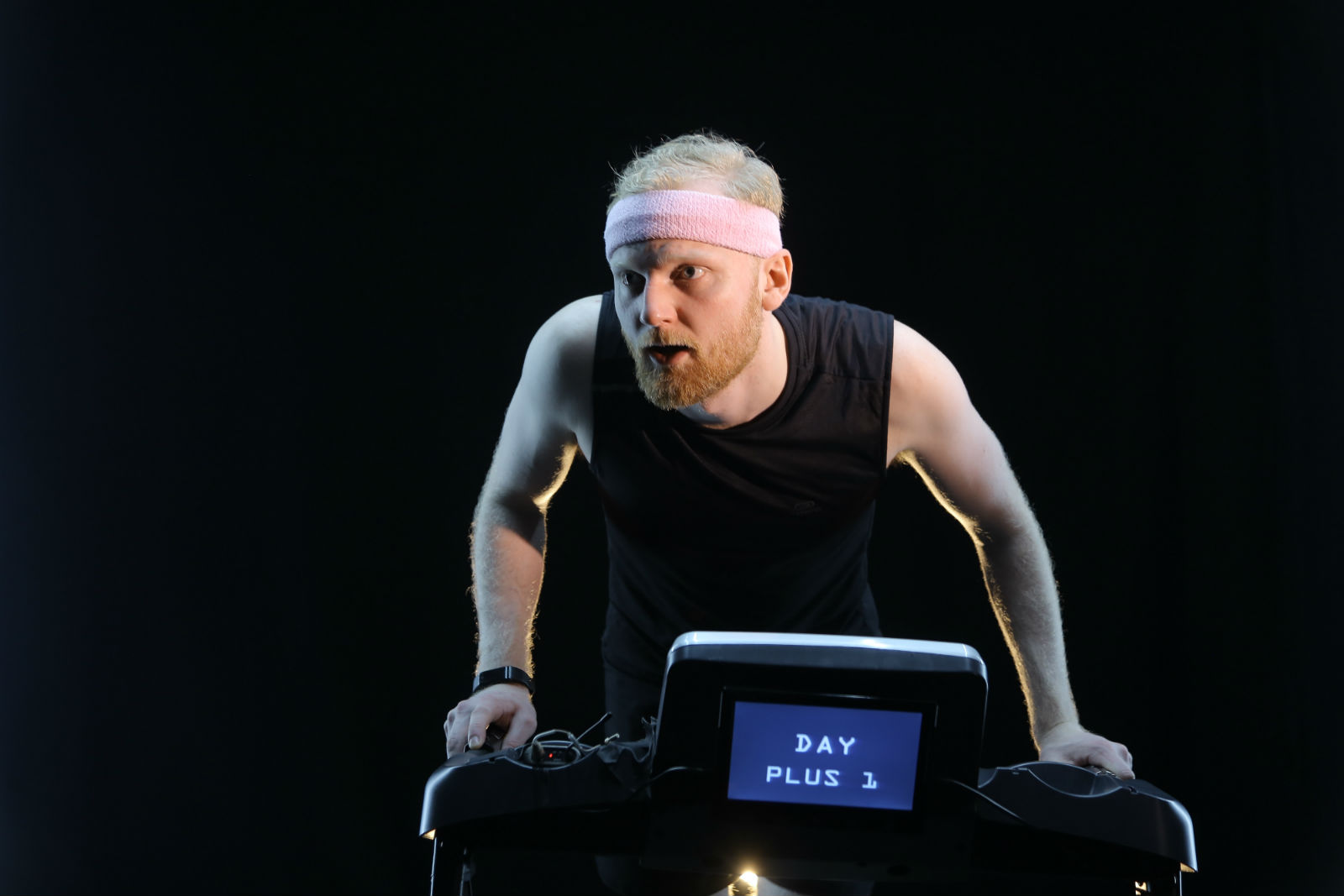I Run tells the story of a man grieving for his dead daughter, and his discovery of running as a coping mechanism. Standing on a treadmill facing the audience, dressed in running gear, flanked by two fluorescent skylights that cover him in a stark and clinical light, the bereaved father begins to run. A small screen on the front of the treadmill displays Day 0, like the figurehead of a ship sailing into dark and stormy waters.
Day 0, we soon learn, is the day his six year-old daughter died. The piece jumps back and forth in time from before and after this moment, with each visit to the past making the fallout of the future more and more harrowing. The erratic nature of the changing time and place echoes the emotional turbulence the man is experiencing. The hour-long one-man play, written by Line Morkeby, and delivered by actor Max Keeble, is full of image-rich poetry and the tortuous repetition of moments of anguish and elation: ‘I run, I glide, I fall, I run, I glide, I fall,’ yells Keeble, as he sprints from the hospital in the aftermath of his daughter’s passing.
The show kicks off hot and heavy, so by the midpoint we’ve reached a bit of an energy plateau. However, this doesn’t take away from the piece’s overall emotional resonance, with the ending still yanking at our heartstrings.
Keeble is somewhat acrobatic on the treadmill, which gives a subtle flair of spectacle to the piece without pulling away from the realism of the character. It doesn’t look like an easy piece to perform, but the actor’s remarkable stamina cements how important running is for the nameless dad; the sport is a constant and ingrained necessity to his being.
It would be predictable of a piece that looks at grief to attempt to take us out of the deep, dark tunnel and bring us to an emotional resolution. Instead, I Run examines the intricacies of the roughest parts of grief – in its written and visual poetry it is both chilling and hopeful.
The piece examines the persistence of grief by reinforcing its timelessness. Past, present and future exist together eternally. Although he’s running, he stays in the room with us, never moving an inch; the more he takes us into the future, he’s sure to take us back to those final moments with his daughter, again and again. His emotional journey is huge, but it seems at times hopeless. As his near-continuous running is boxed in by the fluorescent lights to his sides, he appears forever moving between entrapment and freedom – making the piece, as a whole, hellishly durational and inspiring in its persistence.

